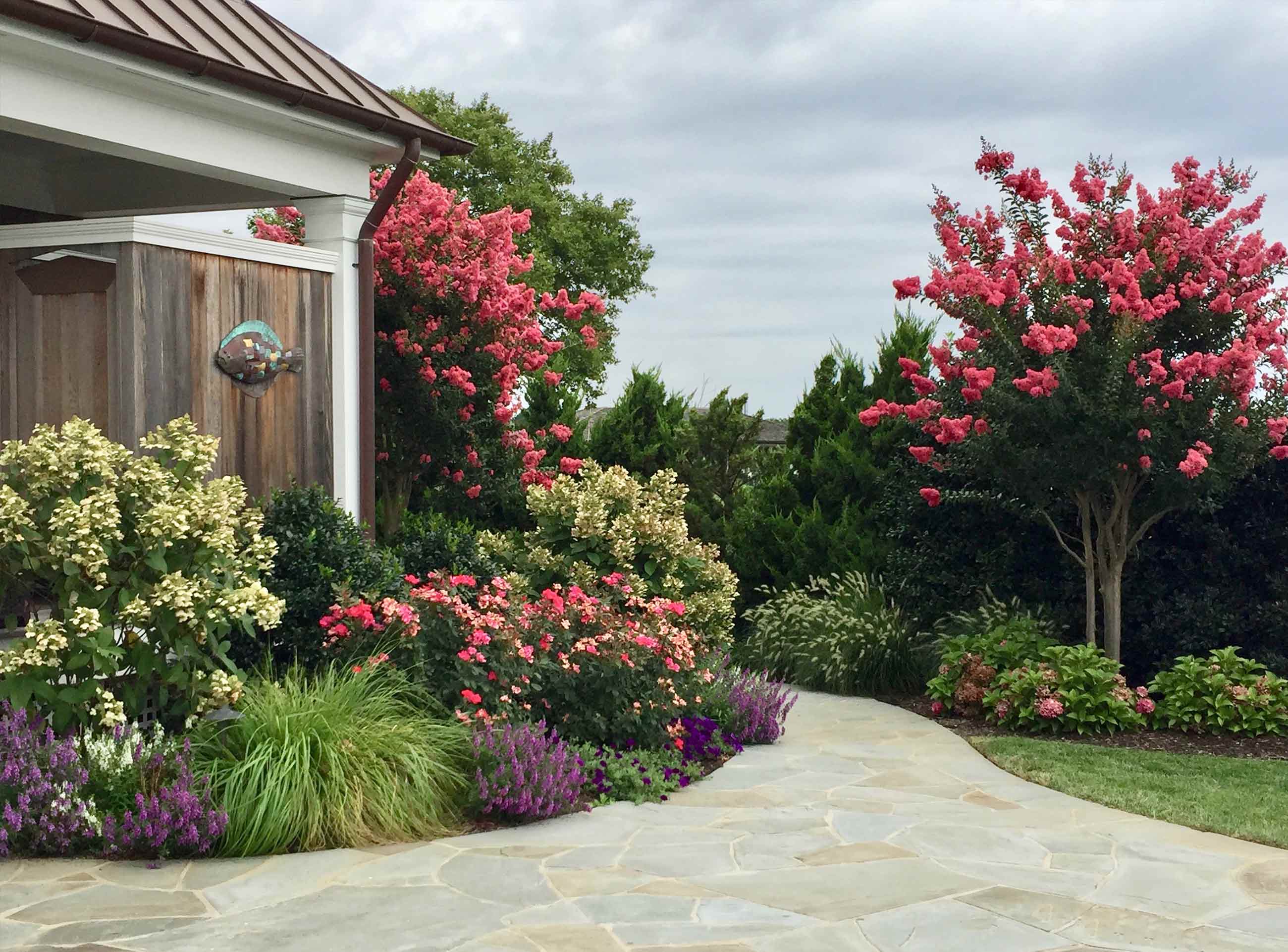We take pride in our horticultural knowledge.
It is the foundation upon which all successful designs are built. Continuing education and updating all certifications each season is essential.
In order to maintain and increase your landscape investment, our skilled horticulturists have pioneered and practiced Integrated Pest Management (IPM) and Plant Health Care (PHC) since 1989. These concepts reduce our reliance on pesticides while improving the quality and aesthetics of the landscape. This has been our goal.
But, what exactly are the techniques used when implementing a Plant Health Care program? They are as follows:
- Monitoring – this involves watching for insect pests and diseases as well as cultural problems through monthly or semi-monthly visits to your property. Knowing when and what to look for on various plant species is the key to success. (Key plant, key pest method)
- Inspection – if we suspect a problem, we employ various techniques such as using a hand lens or beating tray to inspect the plant for insects (e.g. mites). Common cultural problems that arise are improper irrigation, imbalanced pH or nutrient levels. We regularly soil probe to determine moisture levels and will submit soil samples when necessary.
- Decision making – once we have determined there is a problem, we must decide if it is necessary to remediate. We will look for the presence of natural predators and beneficial insects along with population levels of the pest. The damage threshold is assessed and will determine whether action is needed.
- Non-toxic controls – natural alternatives consist of physical removal of pests by hand (e.g. bagworm) or water stream (e.g. soft scale). Most applications of the pesticides used are horticultural oils and soaps (non-residuals) which smother and suffocate the insect. Introduction of predator insects such as ladybugs can also be effective.
- Good cultural practices – this employs the use of mulches to suppress weeds and insulate the soil, proper pruning, timely fertilization, managing irrigation and soil analysis before and after planting.
Plant Health Care is providing the best environment for plants in the landscape to thrive. Healthy plants can withstand disease and pest pressures better than stressed plants.
When we employ these fundamental horticultural practices, the overall landscape is improved when compared to a landscape which has a heavier reliance on the use of chemicals.


